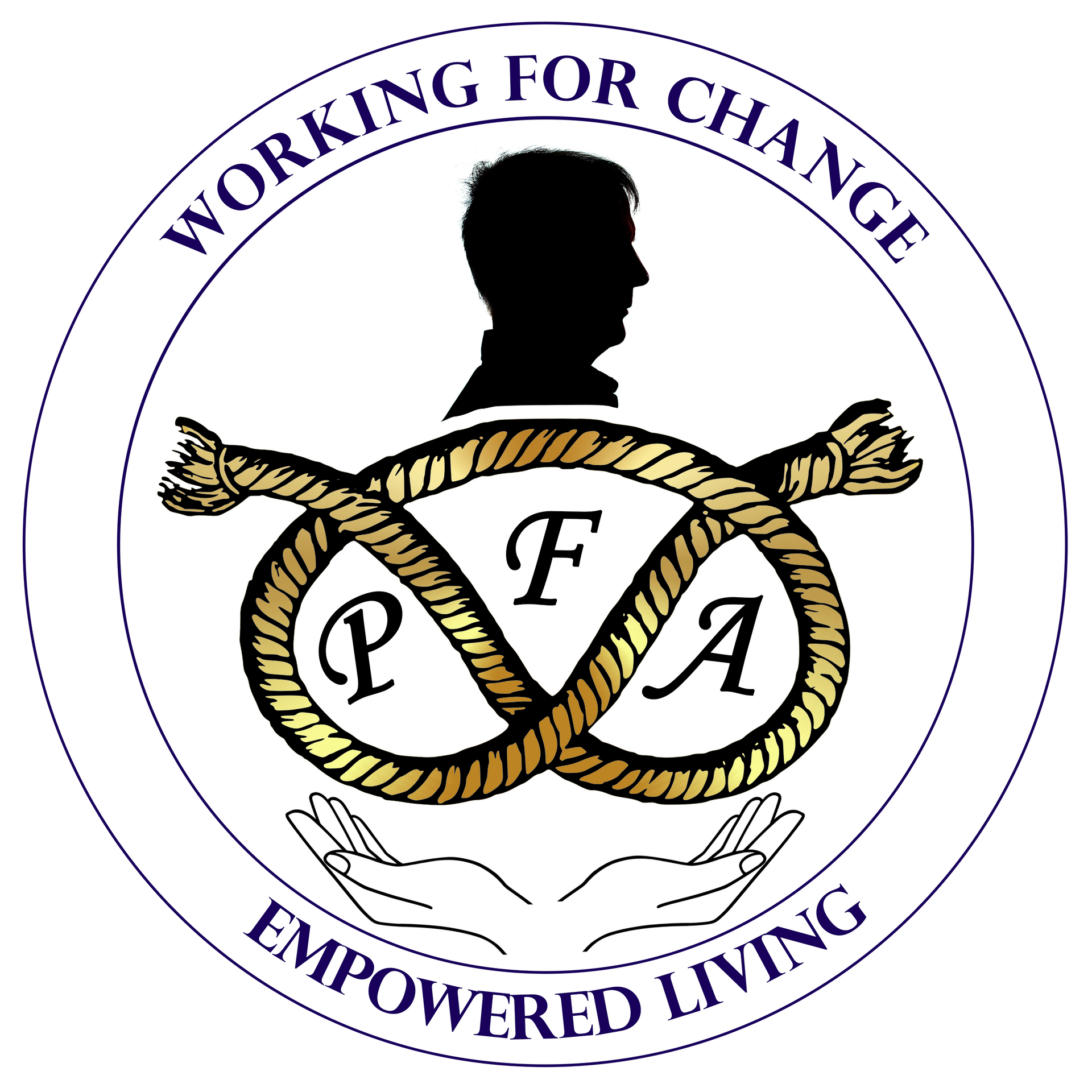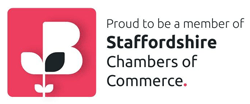Cognition or Assumption: What Truly Hinders Sight Loss?
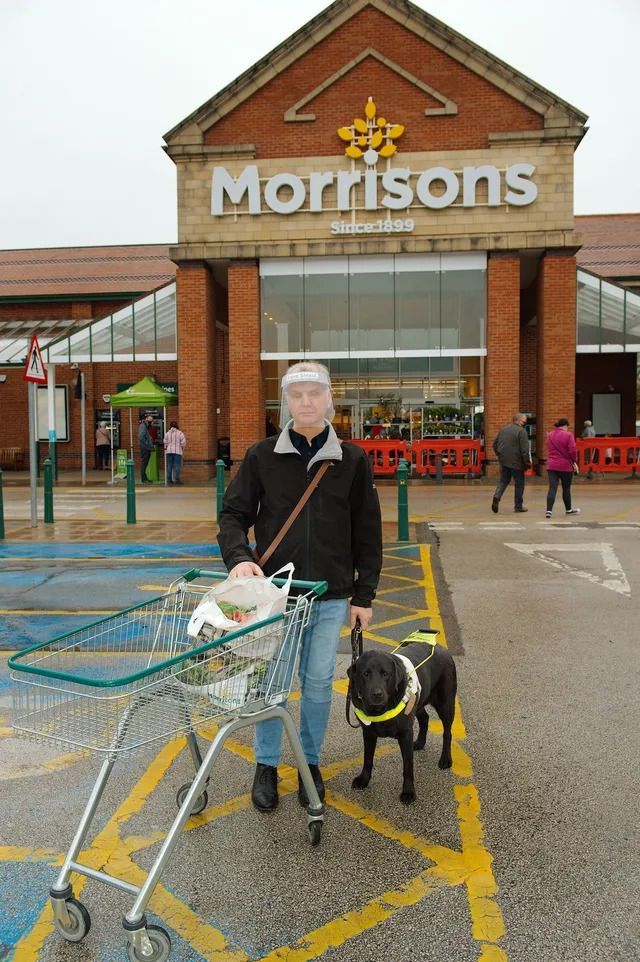
Q&A
By Philip Francis Anderson:
Activist and Podcast Host Campaigning for Change
I’ve been refused dinner invitations, had my expressions of help quietly declined, and watched friends accept meal gifts from sighted guests, while my own benevolent offers were politely brushed aside—all because I couldn’t see. These aren’t isolated moments—they’re part of a pattern that those of us with sight loss quietly navigate every day.
Key Takeaways:
- Vision isn’t the only gateway to learning. Our other senses, though often overlooked, play a vital role—and it's the brain, not the senses, that does the interpreting.
- Braille is a complete, expressive reading and writing system—read through touch, interpreted by the brain, just like printed text is seen and processed.
- People with sight loss can and do live full, independent lives. Assumptions—not ability—are often the biggest barrier we face.
More Than Meets The Eye
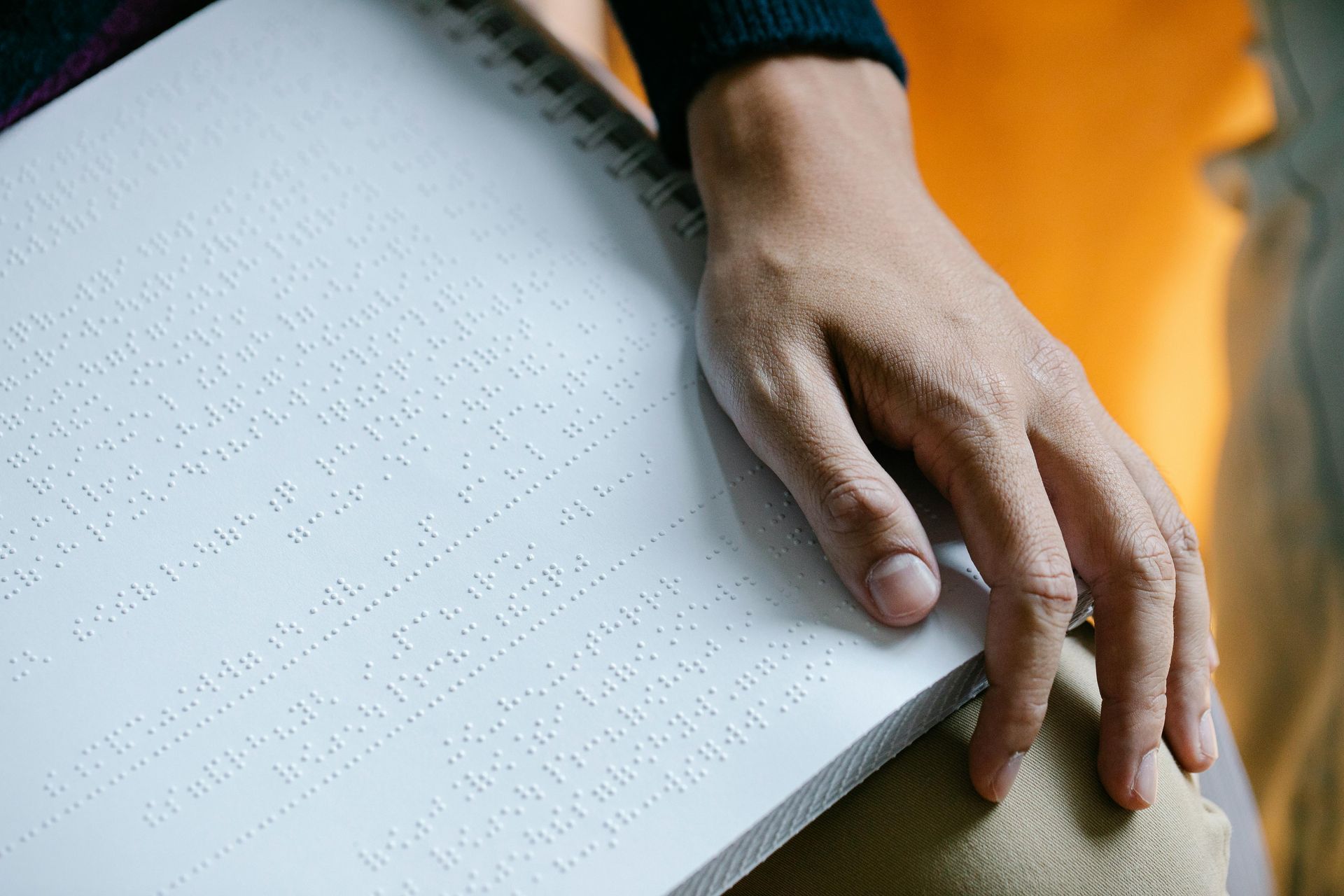
It still amazes me how some people still believe that living with sight loss somehow limits your ability to learn. That if you can’t see, you can’t read. That if you use braille, you can’t write it. That special schools for children who are blind just teach mobility and cane use. And perhaps most damaging of all—the myth that sight loss is a form of learning difficulty.
Let’s set the record straight, shall we.
Q. Is Sight Loss the Same as a Learning Difficulty?

A. No, they are entirely different. Sight loss is a sensory impairment, not a cognitive one. A person who is blind or partially sighted can excel academically, professionally, and creatively. Intelligence and curiosity are not dependent on vision. Even official education frameworks, such as The Foundation for People with Learning Disabilities recognise that sensory impairments like sight loss are distinct from learning difficulties, with different support strategies tailored accordingly.
In fact, the brain is wired to learn through all the senses.
Think about it: four of our five senses—hearing, smell, taste, and sight—are located in the head, right next to the brain. And while touch takes place in the hands and skin, the information it gathers is processed instantly by the brain, often in tandem with sound and speech. Hence, when someone listens closely, memorises routes, picks up subtle changes in tone, temperature, or texture, they are learning just as actively—and often more attentively—than someone with full vision.
Try this short sensory exercise.
Can you recall:
- Five smells from childhood
- The worst-tasting food you ever had
- The very first sound you remember
- A moment where touch made a lasting impression
- Your least favourite colour.
What you must remember is, our senses themselves don’t interpret or remember anything. They are receptors, not processors. The eyes do not “see” in the active sense—they receive light. The ears do not “listen”; they detect vibrations. With the exception of smell, which is sent directly to the olfactory bulb, our remaining four senses travel to the thalamus, the brain’s central relay station, where they are converted into the language of the brain—electrical codes—and then directed to the relevant areas for interpretation. In other words, learning happens not in the senses, but in the brain. That’s why people with sight loss are fully capable of absorbing, retaining, and applying knowledge through alternative sensory channels. Take the Haptic intelligence test. It is a performance-based intelligence measure for adults with partial or no sight and can be completed in up to an hour and a half. It is a tactile performance test and was designed to be used with, or independently of, the verbal scale of the WAIS.
Building on the idea that cognition is grounded in sensory experience, recent thought leaders are pointing to touch—not vision—as the foundational sense for understanding and thinking.
writing in a Harvard-affiliated context, Carlos E. Perez, Assistant Professor at the Catholic University of Chile and former adjunct lecturer of political theory at the University of Hamburg, argues that while vision excels at detecting colour and light, it provides only fragmented glimpses of the world. By contrast, touch offers a continuous, nuanced stream of information—textures, shapes, temperature, and pressure—that the brain uses as the bedrock of cognition. In Touch (Not Vision) Is the Foundation of Human Cognition, Perez contends that researchers overly focused on visual processing may be looking in the wrong place. If general intelligence is to be understood—let alone replicated—it must begin with our most primal, embodied sense: touch. This reinforces the argument that it is touch—not vision—that forms the substratum of human cognition, further undermining the misconception that sight loss diminishes intellectual capacity.
That said, it’s important to acknowledge a related discussion that often emerges in later life: the suggestion that vision loss may contribute to cognitive decline. Some research does point to this — but not because blindness itself impairs cognition. Rather, it often stems from reduced physical activity, diminished social interaction, and less mental stimulation following sight loss, particularly in older adults with limited support (Swenor et al., 2021). A related study by the same researchers observed a similar association between vision loss and cognitive decline, though it stressed that causation remains unclear due to the complexity of contributing factors such as age-related health conditions and environmental influences (Swenor et al., 2019). In short, it is not the absence of sight that dulls the mind, but the absence of meaningful engagement. Cognition remains intact — capable, curious, and eager — provided it is nourished. What truly undermines learning in this context is not vision loss, but the belief that vision is essential to understanding. That belief, when left unchallenged, risks becoming a self-fulfilling barrier.
Q. Is Learning with Sight Loss Really That Different?

A. No. Not really. While the root might be different, the outcome is the same. The idea that learning is somehow different for those of us with sight loss, I believe stems from a sight-led culture that equates seeing with knowing. Many assume vision is the only valid gateway to knowledge, forgetting how the other senses offer rich and reliable access to learning. This assumption often goes unchallenged because our media and education systems rarely showcase diverse learners in meaningful, everyday roles.
For instance, a 2019 RNIB report revealed that fewer than one in five people with sight loss felt represented in mainstream media, and when they were, it was often in passive or stereotyped roles. Similarly, in schools, visual learning is still prioritised, and teacher training on non-visual formats remains patchy “as shown in a 2022 study by Thomas Pocklington Trust, which found that many teachers lacked both the confidence and tools to fully support pupils with vision impairment—especially when it came to adapting learning materials beyond printed text.
Regrettably, when individuals with sight loss are consistently absent from capable, empowered roles—whether in classrooms, workplaces, or on screen—it sends a message. That message breeds misunderstanding. And in the absence of representation, truth is replaced by assumption. Assumption gives rise to suspicion. Suspicion breeds intolerance. And once left unchallenged, the issue gathers momentum, quietly growing in strength and scale until it hardens into prejudice.
Worse still, people make the mistake of filling in the blanks before ever speaking to the individual concerned. They look at a white cane or guide dog and assume a life of limitation. Without real conversation, they script the story for you—concluding what you must struggle with, what you probably can’t do, and what’s unlikely to be worth explaining. It’s speculative thinking masquerading as empathy, but in truth, it’s a barrier. Because when conclusions are drawn before questions are asked, there’s no room left for truth to enter. To illustrate: I once offered to contribute to a team report at a business meeting in the early 90s. Before I’d finished my sentence, someone said, “Oh, don’t worry—we’ll handle the typing.” No malice. Just the assumption that because I couldn’t see, I couldn’t write. “Not only was I more than capable—I had also drafted three proposals the previous week. Yet, that one moment revealed how quickly ability is overlooked when presumption gets there first.
Q. What Did Special School Really Teach You?
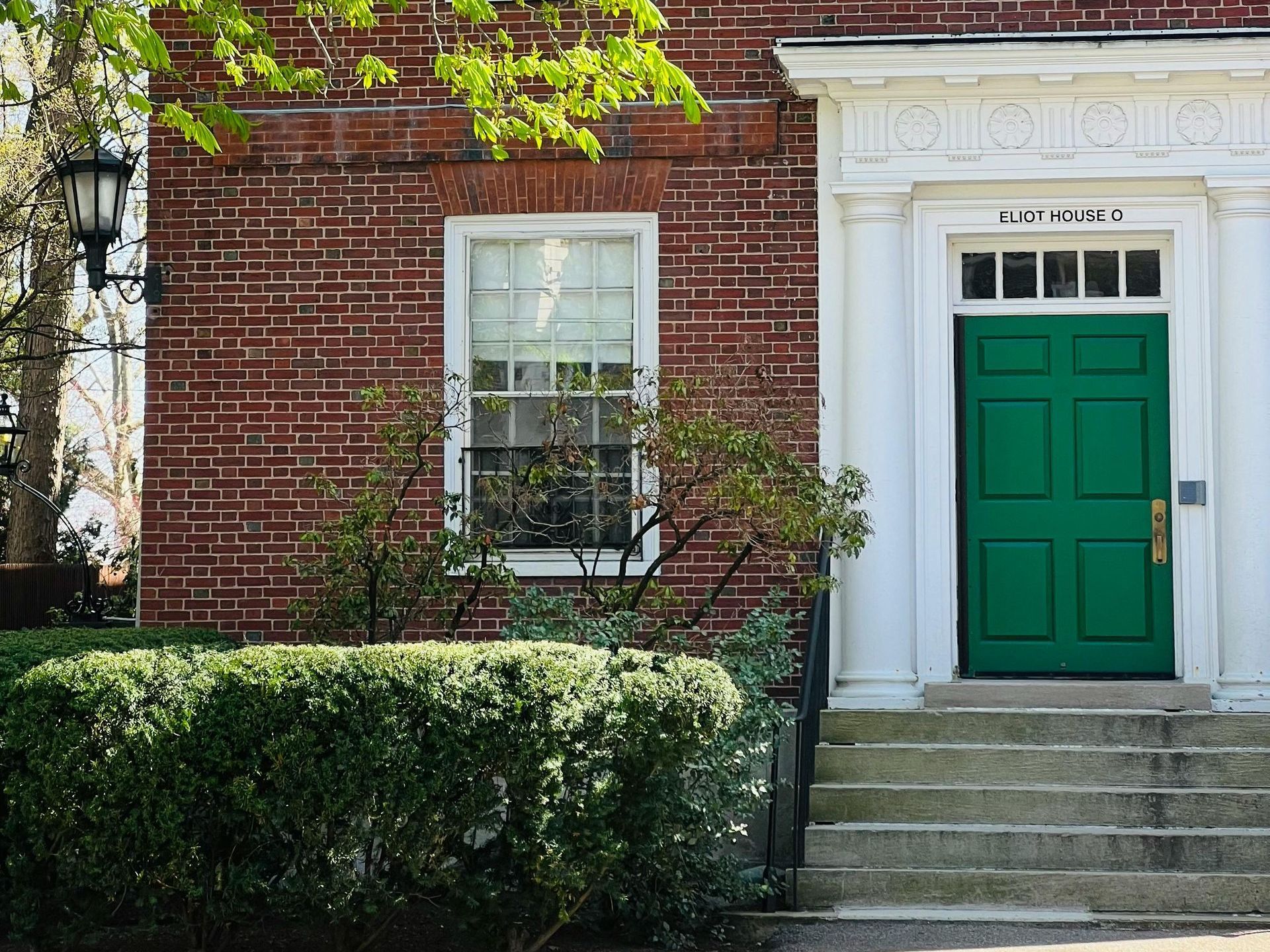
A. Contrary to popular opinion, it wasn’t just braille and mobility. Like any mainstream education, it involved English literature, maths, science, biology, geography, business studies (one of my favourites)—even sport. Learners with sight loss follow the same curriculum as their sighted peers. These subjects were adapted using a variety of accessible formats—tactile diagrams for science, audio versions of textbooks, large print resources, and screen readers to support independent study. Special schools can also foster independence, resilience, and a strong sense of identity.
I was taught how to navigate physical spaces with safety and confidence—learning orientation, mobility, and spatial awareness in relation to myself and the environment. From the age of five and a half, I was boarding, dressing and bathing independently, tying shoelaces and polishing shoes by the age of seven. I learned to cook—well enough to win the cookery category at the school Eisteddfod nine years later in 1986—and it’s a passion I still enjoy today.
I developed listening and reasoning skills early on, too. I was regularly invited to tune into schools’ radio broadcasts—lessons where you listened, absorbed, and responded. I credit those broadcasts with shaping much of my imagination, and my deep love of audio to this day.
Emotionally, I grew up fast. Like many children sent away to boarding school, I dealt with homesickness in quiet solitude. We were allowed just two phone calls a week. Personal radios weren’t permitted until you turned nine. So, I turned to the natural world for comfort. I can still remember lying in bed, the sounds of owls outside my window becoming sentinels of reassurance during those private hours when tears came unchecked. It taught me that emotional pain, even in childhood, can be survived—and that solitude need not always be empty. It’s probably why I seldom get bored even now.
Conversely, I also learned the difference between playful teasing and real bullying, and how to manage the bumps and bruises that come with playground life. Moreover, I came to value my personal space, limited though it was, and the mutual respect we had for one another’s dormitory boundaries. That small patch of bed and bedside cabinet felt like my own kingdom.
But special school also taught me something else—less explicitly, but no less powerfully. It taught me that, whether by design or default, advantage was reserved for the few. The naturally able. The effortlessly capable. And for the rest of us, the message was quietly encoded: don’t expect too much upon leaving.
Thankfully, I was always something of a self-possessed child—resourceful, determined, and at times, gloriously misguided. And those traits served me well, especially when I later entered the dragons’ den of the business world, forging my path through self-employment and company directorships, following endless rejections from employers and soul-sapping remarks from job centres that management roles weren’t for people like me.
So yes—special school taught me braille and books. But it also taught me boundaries, survival, self-sufficiency—and above all, how to thrive, even when the world expects you merely to manage, from where part of my hunger for business and the world of
self-employment originated.
Q. Do People with Sight Loss Really Read Braille but Not Write It?
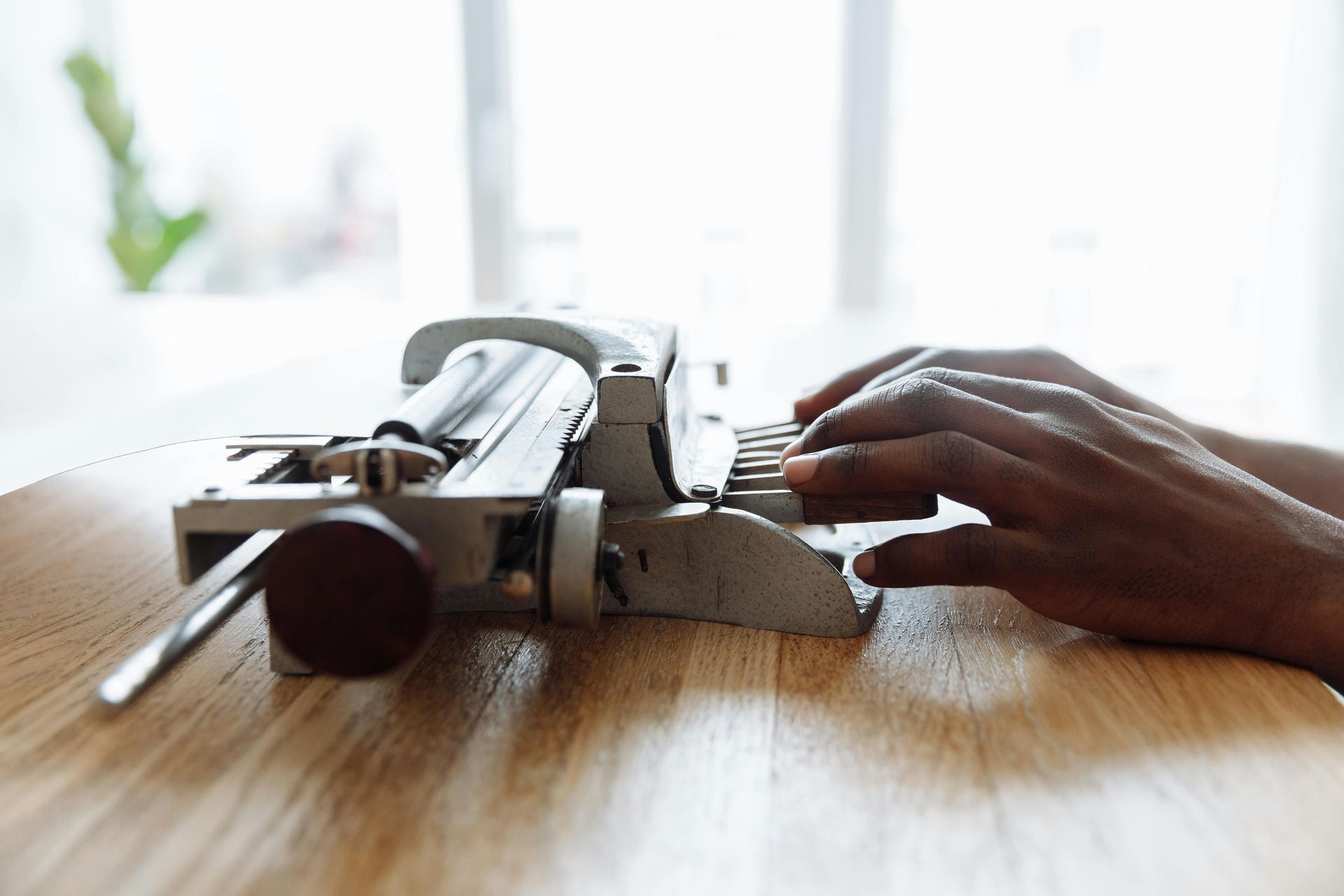
A. That’s a myth. Braille is both a reading and writing system. Anyone who uses it can do so using a slate and stylus, a Perkins brailler, or digital tools like braille embossers and electronic Braille displays.
I would go as far as to say that writing in braille is as natural to many as typing is to individuals with sight.
I began learning braille at the age of five. While children with sight were beginning to master their handwriting with pencils and lined paper, I was sitting at a heavy Perkins brailler, learning to punch out tactile characters line by line. One short lesson a day, just like any other child practising their early penmanship. The assumption that braille takes longer to learn than writing in ink simply isn’t true. As with anything in early learning, it depends on the child’s cognitive readiness and, just as importantly, the skill of the one doing the teaching.
You didn’t learn braille all at once—no more than a non-blind child learns the whole alphabet in a single sitting. It unfolded gradually, on a need-to-know basis, shaped by age and ability. That early learning felt no different to my non-blind classmates’ experiences—just differently equipped.
And oh, those Perkins machines! You certainly needed strong fingers back then. They were hefty beasts. If one landed on your foot, you'd know about it. But they were also deeply sensory. I remember three things vividly: the noise, the smell, and the feel of the dots under my fingers. The rhythmic clack of the keys, the satisfying bell that rang at the end of each line—quieter than a typewriter, but steady and purposeful. The warm, mechanical scent of the oil used to keep the rollers gliding. And the sheer fascination of producing rows of textured, meaningful shapes on thick paper with a few simple keys.
Looking back, there was more to writing braille than met the eye. It was a whole-body lesson in precision and dexterity—from feeding the paper into the rollers, to lining it up square using both hands. Cut corners and use only one feeder, and you’d end up with a beautifully crumpled sheet, a chorus of giggles, and a rap on the knuckles from a no-nonsense teacher with a wooden ruler. It was the 1970s, after all.
And as for reading—just as printed letters are detected by the eyes and interpreted by the
brain as words on a page, the same applies to
braille. My fingers detect the raised dot patterns, and my brain interprets them as language, sentence flow, and meaning. The process is identical in function—only the route is different as highlighted in the article,
Neuroplasticity and Braille reading, published by PubMed Central. One pathway is touch through the fingers; the other is sight through the eyes. So, you see, vision isn’t the only gateway to literacy.
Q. Is It True Braille Doesn’t Have Punctuation?
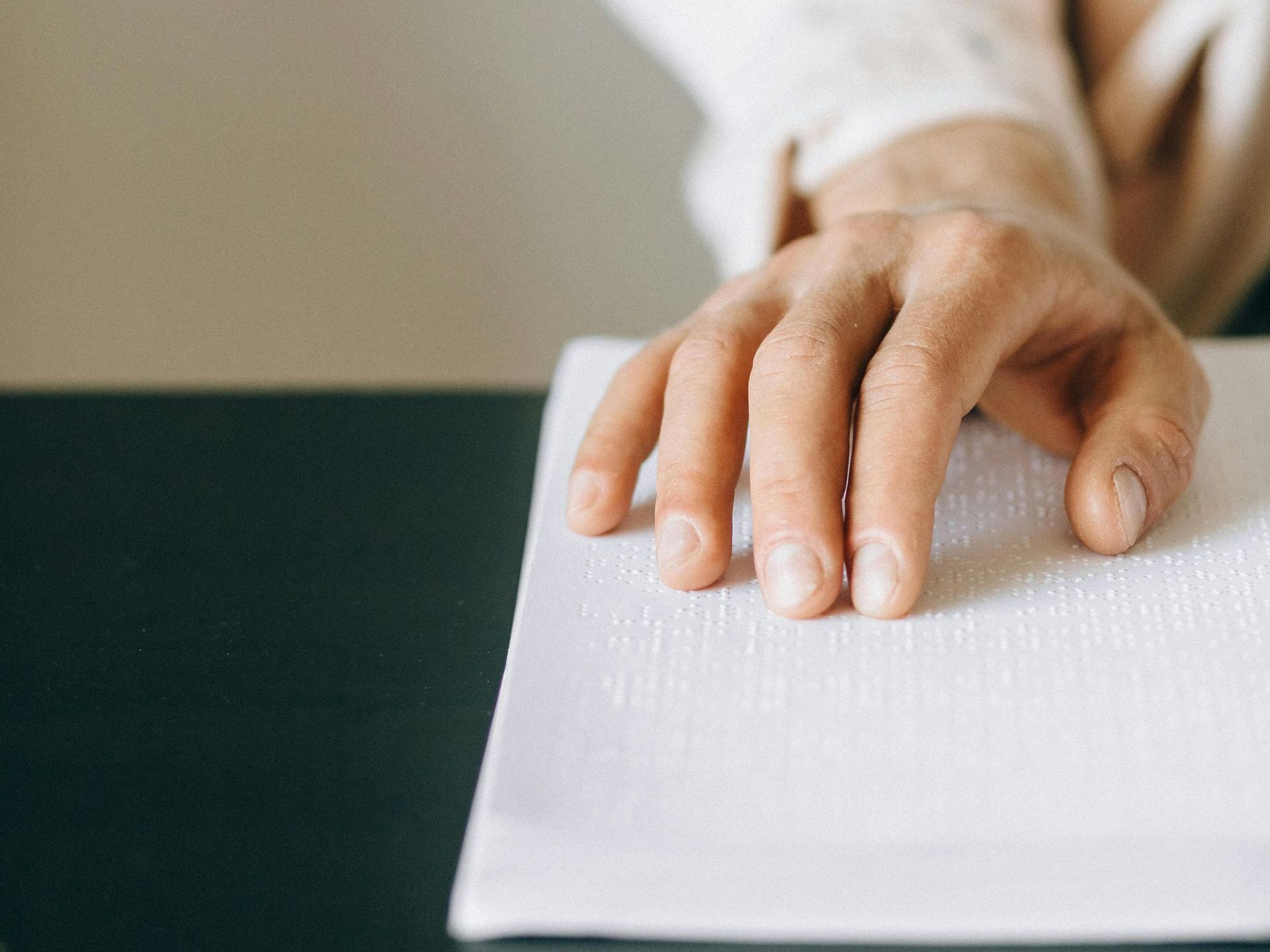
A. Not at all. Braille includes punctuation marks such as commas, exclamation points, quotation marks, brackets, and more. It also includes specialised systems like the Nemeth Code for maths and scientific notation, a music braille used by musicians around the world, a complete and nuanced writing system created by Louis Braille.
Q. Are There Misconceptions About Daily Life Too?

A. Absolutely — and they run deep. Many still assume that a person with sight loss can’t cook a meal, shop for their own clothes, bathe independently, or even select what to wear each day. But these assumptions often say more about the onlooker’s discomfort than the reality of life without sight.
I can’t begin to tell you the number of dinner invitations I’ve missed over the years, simply because someone assumed I wouldn’t be able to cook a meal in return. Or worse, the subtle gift rejections — like when I’ve offered to bring a dessert to a friend’s gathering, only to have the offer quietly declined… yet accepted from their sighted guests. It stings.
Even from members of my own family, where you would have thought they would have known better. I remember, as a boy of eleven, proudly offering my father a cup of tea I’d made by myself. He turned it down, with the message registering that somehow, even a simple act of care wasn’t credible from someone who couldn’t see. And the shame I felt in that moment stayed with me far longer than it ever should have.
As I mentioned earlier, our senses are remarkable teachers. They don’t process memory themselves, but they’re powerful messengers to the brain — each one offering a different route to understanding the world around us. That truth is never clearer than when navigating the routines of daily life.
So, let’s put that into practice. Flare your nostrils, flex your fingers, and join me on a quick imaginary shopping spree.
One of the first things I notice in a clothing shop is the scent — fresh cotton, new wool, sometimes synthetic blends — each with a distinct character. Can you smell it? Then comes texture. My fingers tell me what my eyes cannot: softness, stretch, quality. What are your fingers saying to you right now? This tactile language is deeply ingrained.
And what about colour?
While I don't see colour in the visual sense owing to optic nerve hypoplasia (ONH), a form of congenital blindness, my understanding of it is conceptual—like justice or courage. I know that red is fiery and bold; navy is dependable and formal. These ideas are built from years of language, association, and memory.
But daily living is more than just perception—it’s about choice. Take clothing, for instance.
What often gets missed in public conversations around independence is the sheer variety of micro-decisions involved in getting dressed each day. Selecting an outfit isn’t just about function—it’s an expression of self. For me, clothes convey fragments of my character: practical, confident, quietly courageous, and occasionally bold. Let’s be honest, my wardrobe choices aren’t made in a vacuum—they’re shaped by ethics, touch, and lived experience.
I tend to avoid fast fashion and reject brands known for unethical labour. Wherever possible, I steer clear of garments made through suffering. As I see it, clothing is part of your moral footprint. Knowledge, yes—but knowledge paired with wisdom—that’s where real choice lies.
I favour natural fibres: cotton in particular for its breathability, and wool for its warmth and timelessness. There’s a comfort in materials that serve you well in both summer and winter. And unlike acrylics or synthetic blends, these fabrics feel genuine—grounded. I’ve long said of wool, if it’s good enough for a sheep, it’s good enough for me.
When selecting clothes, I pay close attention to detail. Stitching should be even. Seams should run cleanly. None of this so-called asymmetrical fashion that looks more like a manufacturing fault than a design choice. Familiar brands often help; they serve as a benchmark for quality. Once I trust a brand, I stick with it.
I also have my own way of coordinating clothes. Neutral tones like navy, beige, black and grey make pairing easy and remove unnecessary friction from the decision-making process. While I don’t rely on others, I may occasionally ask someone to confirm a colour before I buy—especially if purchasing online, where product descriptions can be deceptive.
At home, I’ve created a clear system for storage. I use two double wardrobes: one for smart wear, the other for smart casual. Shirts and jackets are hung neatly; knitwear and shorts are folded on shelves. My late mother—once a clothing inspector for J. H. Greenwood Ltd Biddulph branch—always warned me never to hang heavy woollens, as they lose their shape. I’ve followed that advice to the letter.
Laundry, too, follows a trusted routine. I use reusable mesh wash bags for socks and smalls—ventilated and organised. It’s a simple fix, but one that’s kept pairs together and reduced frustration to near zero.
Q. Have There Been Fashion Mishaps?
A. Hmm. I had to think long and hard about this one. Until I came up with these. Two not so exciting. And one mitigating disaster from way back in my childhood.
The not-so-exciting. I’ve gone out in odd socks. Once I discovered a stain on a shirt only after someone tactfully pointed it out. But one incident stands out—a moment from my boarding school days. A fellow pupil tripped while carrying breakfast and emptied an entire bowl of porridge onto my chest. I was seven. Fortunately, I was wearing one of the school’s protective aprons at the time. Even so, I had to sit through the meal in a porridge-spattered pinny, only to be blamed by the matron afterwards for making a mess. That was a lesson in silence and survival. To this day, I live by the motto: don’t explain, don’t complain.
And those odd socks? When others wear mismatched pairs, it’s a fashion statement. When I do it, people assume it’s because I’m blind—as though creativity and non-conformity don’t belong to me. These are the quiet prejudices that still linger.
Confidence in dress comes with time. It’s partly psychological. There’s a known link between clothing and mood. Feeling well-presented affects not only how others perceive you, but how you perceive yourself. And because I’ve taken care in selecting what I wear, I don’t need constant reassurance as confidence is already stitched into the fabric — helped by two crucial questions.
I discovered them while browsing the net for information on consumer ethics that has stayed with me. Do you know how and where your clothes were made? And: are your choices governed by politics or purse? These questions sharpened my sense of personal responsibility and reinforced my belief that autonomy is not just about ability—but about integrity.
Yet for those of us who spent our formative years in institutional settings, especially before the 1990s, personal autonomy in its truest form was often discouraged. Many of us were told what to wear, when to eat, and how to behave. Even money — a cornerstone of choice and independence — was tightly controlled. Without access to personal funds, choice becomes theoretical, with you as a participant in life instead of its architect.
Yes, I do ask for second opinions on occasion — we all do. But I don't outsource my decisions to others, nor do I seek their validation to justify my life choices. That distinction is everything.
Simple tools like talking kitchen scales, audible timers, bump dots on appliance dials, and colour-coded laundry systems make everyday tasks not only possible but routine for many of us living independent lives with sight loss.
Therefore, the next time someone wonders if a person with sight loss can navigate daily life, let them know independence is not about what you see, but about who you are — and whether you're free to be that person.
Q. What’s the One Thing That Annoys You?

A. It’s the special voice. That slow, sing-song tone people slip into when they realise I have sight loss. You know the type I mean—“Are… you… alright… Philip?” or “You’re… so… brave!” It’s part baby-talk, part overbearing authority, as though I’m a child needing praise for just existing.
Why do they do it? Sometimes it’s nerves—they’re unsure how to engage, so they default to exaggerated politeness. Other times, it stems from outdated stereotypes that cast us as fragile or dependent. Occasionally, it’s an unconscious attempt to control the interaction by lowering expectations.
But special voice isn’t about kindness—it’s about control. It assumes I won’t understand or cope, so the speaker overcompensates, often without realising. Nevertheless, it’s deeply patronising, shrinking me to something less than I am.
And I’m not alone. Author and advocate Jo Elizabeth Pinto speaks of the same frustration, recalling how this voice—what she calls a “pre-emptive reprimand”—was often used on children who were blind, predicting emotional meltdowns before they even occurred. “It wasn’t just the words,” she says—it was the unspoken judgment beneath them. And I’ve felt that too.
Special voice isn’t accommodation—it is assumption coated in syrup. And it’s not just about sound. It’s a tone that says: “I’ve already decided who you are.”
Therefore, the next time you meet someone with sight loss—or any disability—could I suggest that you pause and check your tone. That you speak with respect, not reassurance. We’re not here for praise or pity. Just parity. That’s how dignity begins.
Q. So Why Do These Myths Persist?
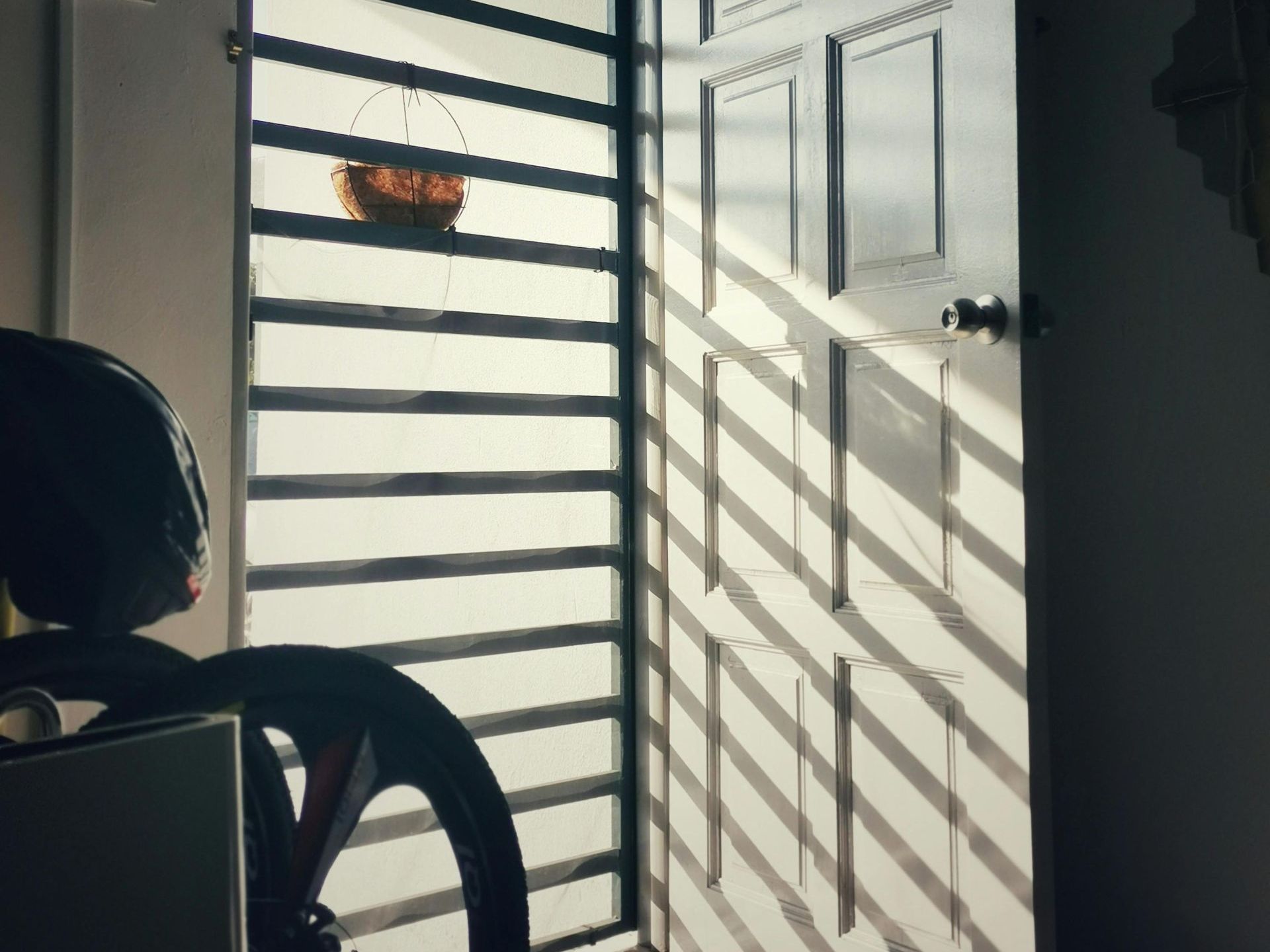
A. Because many people haven’t had meaningful exposure to individuals with sight loss thriving in education or professional life. Without visible examples, it’s easy to assume rather than ask. That’s why open conversations like these and accurate information are so important.
But that’s only part of the story. These myths also persist for three further reasons:
First, the media continues to portray sight loss through limiting tropes.
Whether it’s the tragic figure, the helpless burden, or the inspirational ‘overcomer’, these narrow narratives fail to reflect the day-to-day realities of people with sight loss. A 2024 report published on the Business Disability Forum found that over 50 percent of those with disabilities felt misrepresented by mainstream media, while a report from Ofcom highlighted that broadcasters often lacked diversity in disability both on screen and behind the scenes. Without realistic representation, the public has little context for what blindness truly looks like beyond the stereotype.
Second, mainstream education systems often fall short in teaching disability literacy.
Many children grow up without ever learning about adaptive technology, alternative learning methods, or the wide range of capabilities among people with sensory impairments.
The Centre for Disability Studies at the University of Leeds has long argued that disability awareness should be embedded in early education—not just as a special topic, but integrated into the broader curriculum. Without that early understanding, assumptions calcify.
Third, professional environments remain slow to adapt, fuelling the false link between sight loss and incapacity.
Conversely, a 2022 report from the Social Market Foundation revealed that persons with known disabilities are more than twice as likely to be unemployed compared to their non-disabled peers. Even among those seeking work, many report being overlooked for roles due to accessibility concerns or misguided assumptions about competence. Without structural inclusion in the workplace, independence remains hidden, and myths continue to thrive.
So, what’s the answer?
One, we need greater visibility in public life.
Whether through media, education, or employment, people with sight loss must be seen in diverse, capable roles—not as exceptions, but as equals. This isn’t about inspiration—it’s about normalisation. The more visible our lives become, the less room there is for myth to flourish.
Two, disability education must begin early and run deep.
Schools must go beyond token awareness days. Understanding disability should be treated with the same rigour as subjects like science or citizenship. Only then will tomorrow’s adults grow up with the language and empathy needed to dismantle prejudice.
Three, autonomy must be respected and enabled through better tools and expectations.
As discussed earlier, access to adaptive technology, personal choice, and high expectations are not luxuries—they are essentials. When people are trusted with the right resources and the freedom to use them, they don’t just survive—they thrive.
So let me say this clearly. People with sight loss can and do live independently—but national figures show this remains the exception, not the rule. Across the UK, more than 2 million people live with sight loss, with approximately 424,000 of them of working age. Shockingly, only around 27 percent of working‑age blind or partially sighted individuals are in employment—compared with 75 percent of the general population.
That gap is telling. While a number of us may cook, clean, entertain, raise children, run businesses, care for others, and yes—make the tea, too many of us remain hidden from view, counted as “dependents” rather than the independent, contributing frontliners we are.
Q. What’s One Thing You Wish People Better Understood?

A. That people with sight loss are just as capable of learning, creating, contributing, and living full lives—given the right tools and opportunities. Learning doesn’t stop at the eyes. Nor does daily life. It begins with the mind and flows through confidence, practice, and trust.
And I speak from experience.
I’ve run businesses. I’ve earned qualifications in journalism, maths, English, speech and drama. Today, I’m studying for a BA in Philosophy and Psychology with the Open University. I write, broadcast, and host a podcast where I interview innovators and changemakers from around the world. I do all of this not in spite of my sight loss—but as a person with sight loss who’s simply been given the right tools, the right opportunities, and the right expectations.
And I’m not alone.
Chris Skelley is a Paralympian and world judo champion. Amar Latif runs his own travel company and is a well-known television personality. As is Chris McCausland, a comedian and television personality who lives with sight loss, has built a successful career in stand-up, panel shows, and national broadcasting—who went on to win Strictly Come Dancing in 2024. These individuals, and countless others, are not defined by the absence of sight but by the presence of purpose, talent, and determination. Those of us with sight loss are not just capable of living full lives—but of thriving in them when given the chance to do so with dignity, confidence, and access.
Therefore, here’s a challenge for you.
The next time you meet someone with sight loss, ask yourself: Am I focusing on what they can’t do—or am I open to discovering who they really are?
What assumptions am I carrying that need rethinking? Because if learning begins anywhere, it begins with listening.
And the first step toward understanding is asking the right questions.
Q. So What Does This All Tell Us?
A. The challenge isn’t sight loss itself, but the outdated perceptions that surround it. With the right tools, support, and expectations, people with sight loss are just as capable of learning, living, and contributing as anyone else.
Here’s what we’ve clarified:
- Sight loss is not a cognitive impairment.
- The brain, not the senses, is the true engine of learning.
- Braille is a full language system, not a relic or half-formed code.
- People with sight loss cook, clean, shop, parent, and lead.
- Recent research from Harvard reinforces that it is touch—not vision—that forms the bedrock of human cognition, further undermining the misconception that sight loss diminishes intellectual capacity.
- The greatest limitation is not lack of sight—but the presence of assumptions.
About the Author
Philip Francis Anderson is a writer, activist, and host of the Talking Point Podcast—an independent series exploring resilience, autonomy, and the quiet power of lived experience. His work weaves together psychology, social commentary, and accessibility, often drawing on his own journey with sight loss. He is currently studying for a BA (Hons) in Philosophy and Psychological Studies with the Open University.
Copyright © 2024. All rights reserved by Philip Francis Anderson. This article is the property of Philip Francis Anderson and is protected under UK copyright law. Unauthorized reproduction, distribution, or use of this text, or any portion thereof, without the expressed written consent of Philip Francis Anderson, is strictly prohibited. For permissions, please email the copyright owner.
Comments Welcome!
To leave a general comment, feedback about a post, or even recommendations for a topic to cover, please just fill out this form. For those who would prefer to send their comment in using audio, there is the additional option to upload an audio file.
Contact Us
In line with GDPR, only complete this form if you are happy for me to use your answers for the purposes of processing of your request and in all
corresponding communications thereafter. Read my Privacy Policy for more information on how I manage your personal data. This contact form is also protected by reCAPTCHA, a Google system. Google's Privacy Policy and Terms of Service apply and are available to read when using the reCAPTCHA tool.
